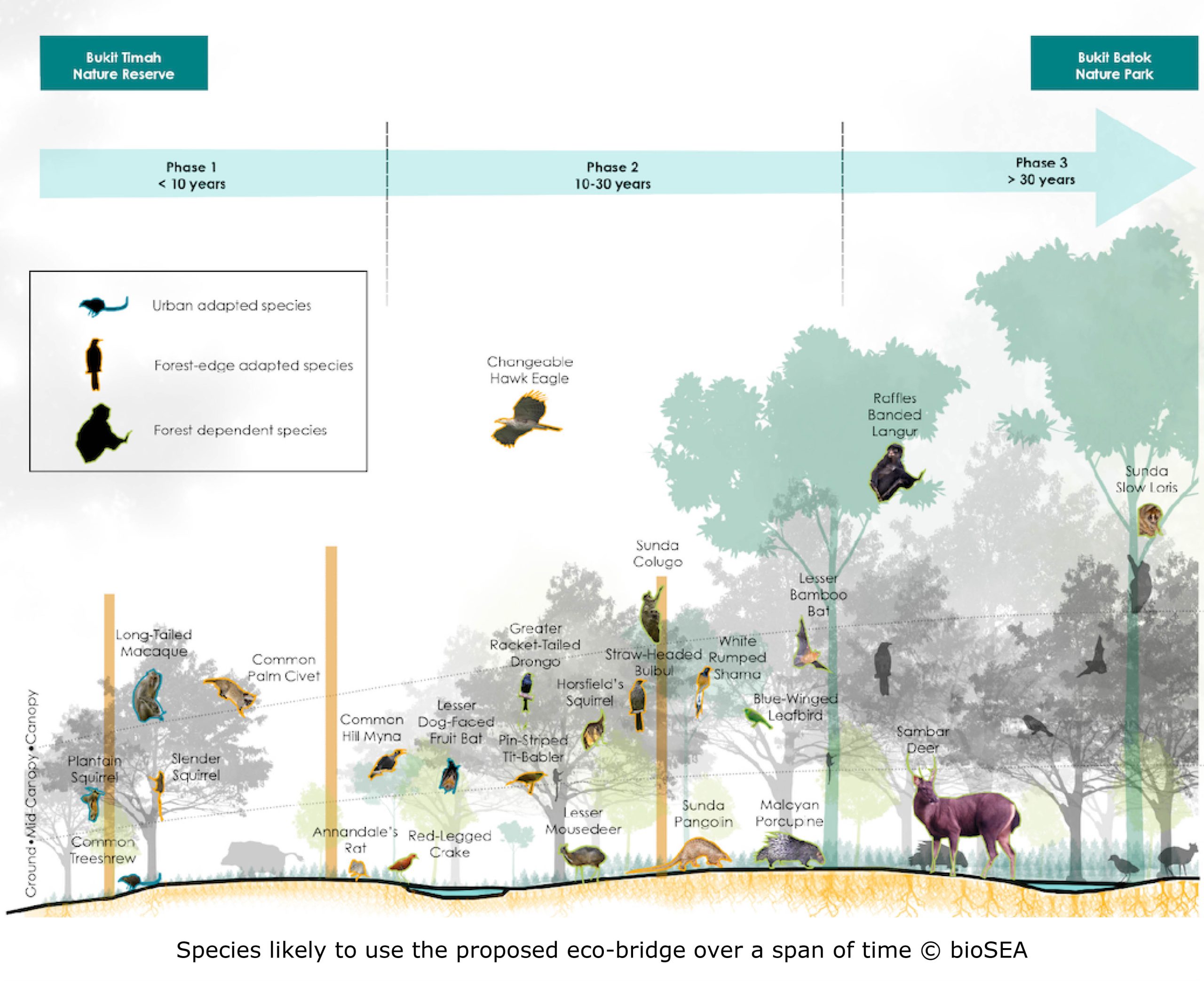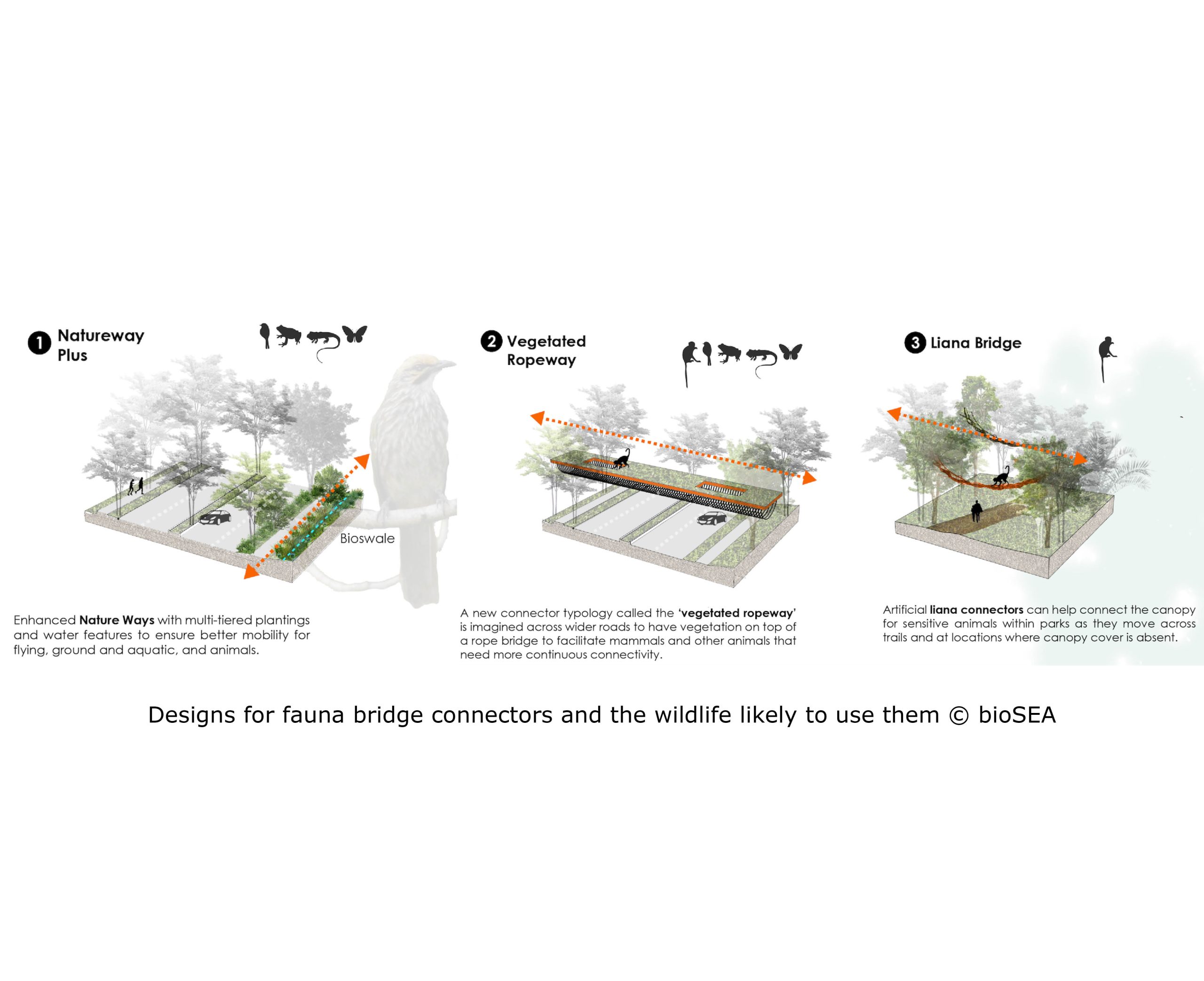-
Designer
LOOK Architects & Surbana Jurong Consultants
-
Client
National Parks Board
-
Location
Singapore
-
Scale
District
-
Status
Unbuilt
-
Services
Ecological Placemaking, Wildlife Infrastructure Design, Biomimicry in Architecture
-
Use
Nature park
-
Year
2022
Bukit Batok Nature Corridor, Singapore



Project Summary
The National Parks Board (NParks) planned to connect several park developments along the Bukit Batok Nature Corridor (BBNC) in Singapore. The aim was to enhance the ecological connectivity between the Bukit Timah Nature Reserve (BTNR) and Tengah while focusing on conservation, ecological links, and recreational opportunities.
The parks undergoing development included Bukit Batok Hillside Nature Park, Bukit Batok Town Park, Bukit Batok Nature Park, Bukit Timah Fire Station Master’s Quarters (BTFSMQ), and Bukit Batok Nature Park Extension. Additionally, a new park called Bukit Batok Central Nature Park was to be created to fill the ecological connectivity gap between BTNR and Tengah. The overall goal was to provide complementary trails and nature recreational opportunities for different user groups.
To rejuvenate the existing parks and design new parks and trails, ecological expertise was needed. This involved understanding methods for conserving native plants and animals, as well as designing wildlife-friendly infrastructure and bridges to improve connectivity and mitigating wildlife-human conflicts. bioSEA was engaged to translate ecological interventions into landscape design elements for evaluation by NParks.
The project started by understanding the habitat types in the parks, including quarries that had been reclaimed by natural vegetation in Bukit Batok Nature Park and Bukit Batok Town Park. Ecologically sensitive zones and areas requiring restorative action were identified. Existing literature was reviewed to identify habitat enhancement and restoration techniques, leading to the recommendation of the framework species method, assisted natural regeneration, and primary forest species enrichment.
Fauna that would benefit from targeted ecological interventions were listed and strategies to manage their populations were devised. Six wildlife crossing types were proposed to improve ecological connectivity and facilitate movement of different species between parks.
In addition to conserving biodiversity, the project incorporated nature stewardship and nature play elements to promote conservation values in the new development. The holistic approach aimed to balance human recreational needs with the ecological needs of wildlife.
Overall, the project sought to enhance the ecological connectivity of the parks, promote conservation, and provide recreational opportunities while ensuring a harmonious balance between human and wildlife needs.
